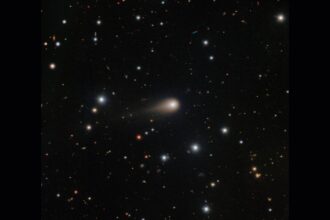On the generic affiliation of “Echemella” occulta (Benoit, 1965) (Araneae: Gnaphosidae)
Benoit (1965) described Allodrassus occultus Benoit, 1965 based on a holotype female from what is now the Democratic Republic of the Congo (formerly Léopoldville, as listed in the description) found in a nest of the termite Cubitermes sankurensis Wasmann, 1911 (Isoptera: Termitidae). It was distinguished from other known congeners at the time (Allodrassus strandi Caporiacco, 1940, Allodrassus pavesii Simon, 1909 and Allodrassus strandi Caporiacco, 1940, all from Ethiopia) by the ‘structure of the epigyne’ without any further explanation. A figure of the [undissected] epigyne was provided (Benoit, 1965: 308, fig. 15) but no illustration or description of the vulva was given. Murphy & Russell-Smith (2007) synonymised the genus Allodrassus Strand, 1906 (type species: A. tridentatus) as well as the monotypic Ethiopian genus Maniana Stand, 1906 (type species: Maniana defecta Strand, 1906) with Echemella Strand, 1906 (type species: Echemella quinquedentata Strand, 1906). Implicitly, this also transferred the species A. occultus, A. pavesii, and A. strandi to Echemella. The authors rationalised these synonymies based on the fact that the type species of all three genera differ only on the number of cheliceral teeth, which is a variable character. They noted that the holotypes of the type species of all three genera are lost, having been destroyed in World War II. Finally, they stated that the three implicitly transferred (i.e. not generotype) Allodrassus species are likely misplaced but did not examine the holotypes. Recently, whilst working on type material of other species described by Pierre L. G. Benoit deposited in the Royal Museum of Central Africa, Tervuren, Belgium (RMCA), we relocated the holotype of E. occulta and are able to provide the necessary evidence to clarify its generic affiliation. In this work, we provide a modern description of the genitalia of “E.” occulta, including the figure of its vulva for the first time, clearly demonstrating this species belongs to the genus Haplodrassus Chamberlin, 1922.








